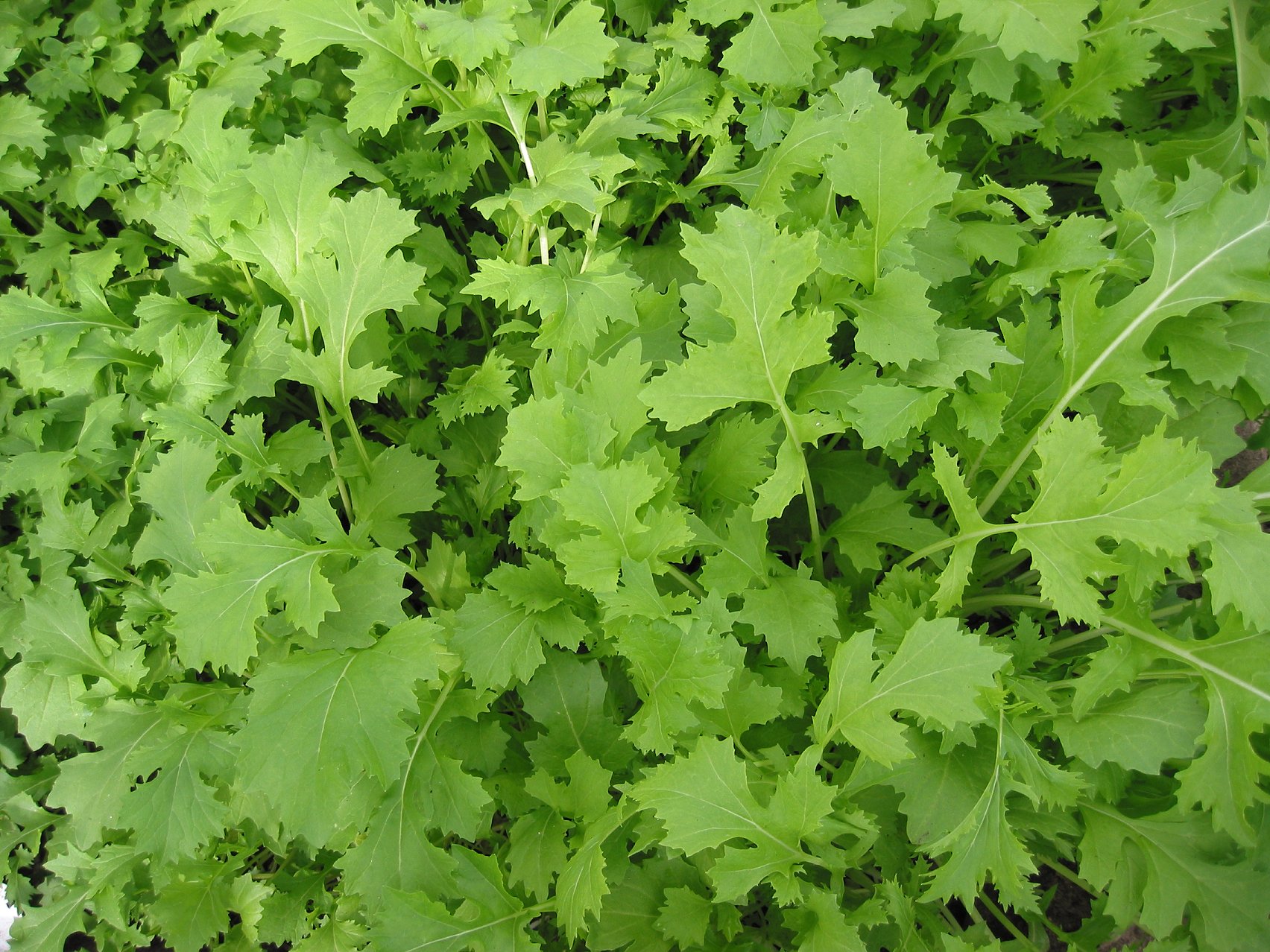
Fresh Greens
I was just reading 5 Super Ingredients by Melanie at dietriffic. She just discovered an Asian green called Choy Sum, and gave a stir-fry recipe. She says she means to add more greens to her diet. It's a good idea. People have been eating greens for a long time, but where meat and carbohydrates are cheap, people seem to start leaving greens off their plate, which is a shame. Greens are the green leaves of non-heading herbaceous plants, eaten as vegetables. They are generally rich in vitamins A, B (including folate), C, E, and K, as well as antioxidants and have varying amounts of the minerals magnesium, calcium, potassium, and iron. Heading cabbages (red and green), iceberg lettuce, and Belgian endive are pale by comparison and so are not treated as greens. They don't develop nearly as many nutrients.
Serving Size
Fresh raw greens, torn or sliced, are fluffy, but will compact when you cook it. To get a half-cup serving of spinach, you'll need to eat a full cup of raw spinach salad, or a quarter cup of well-cooked spinach. Collards, kale, and other, more sturdy greens, won't compact quite as much as spinach will.
Preparing Greens
Very young greens are tender and can be eaten with their ribs, veins, and stems. Sturdier and more mature greens may have tough or bitter stems and veins, which need to be torn or stripped out. Large Romaine lettuce can be torn away from the thickest, whitest portion of its stem. With sturdy collards, grab the stem with one hand, wrap your other hand around the leaf, and strip it right off the vein.
Greens grow close to the ground, so they can be sandy or muddy. If you've got just 4-5 leaves of Romaine for your salad, you can give them a quick "shower" under running water. If you've got a couple pounds of greens, give them a bath in a large bowl or your well-cleaned sink. Agitate the leaves, let the dirt settle, scoop out the leaves, rinse the sink, and do it again. Check the bottom of the sink for dirt and sand. If you got it all, you are done.
To quickly chop a big pile of greens, stack a few up, roll them around their central veins, and slice them into ribbons with a chef's knife. You can turn the mass of ribbons sideways if you like and slice them into rough rectangles.
Most types of greens don't need to cook long -- five minutes or less for very tender young greens, 10 minutes for most sturdy large-leafed greens, 20 minutes for really tough, mature leaves, and longer for certain greens that contain a lot of oxalic acid.
Lettuce is a members of the daisy family. Many Western varieties have been bred for mild flavor to be used in fresh salads, while many more bitter Asian varieties have been bred for use in cooking. They all belong to the same species. People have been eating lettuces for over 4000 years. The darker green loose-leaf lettuces have lots of vitamins and minerals and a mild flavor. A popular way to serve lettuce in the US is in a green salad.
Endives, Radicchio and Escarole are all related to chicory, another member of the daisy family. Most are more bitter than lettuces. While Radicchio and curly endive are used in fresh salads, escarole is usually served served as a cooked green or as a soup.
Spinach, Chard (Silverbeet), Beet Greens. Chard and Beets are different varieties of beet, while spinach is a close relative. These greens have a mild flavor. Young leaves are used fresh in salads while older leaves are cooked.
Amaranth Greens are related to spinach and chard, and are usually eaten cooked.
Spinach and Amaranth leaves contain a fair amount of oxalic acid, which can cause problems for people susceptible to gout or kidney stones
Kole greens like collards, kale, turnip and mustard greens, rapini, Chinese mustard, choy sum, bok choy and kai lan are all the same species as turnips, and are closely related to cabbage and broccoli. Most of these are served cooked, although young mustard greens are can be eaten raw in salads.
Arugula or Rocket is in the same family as cabbages, has a peppery taste, and is often used like lettuce
Taro, Kalo, Dasheen, malanga, cocoyam -- varieties of colocasia and xanthosoma have been grown around the world for thousands of years. The greens contain needles of oxalic acid, and must be cooked for a long time before they can be eaten. These greens are popular in the Caribbean and Polynesia
Weeds or uncultivated greens Other greens, such as dandelion, lamb's quarters, miner's lettuce, and purslane, are collected wild and are not as likely to show up in the supermarket. Some of these greens contain even more vitamins, minerals, and antioxidants than supermarket variety greens.
Read all of "Greens -- an introduction" ...
 It is really hard to scrub the germs off a cantaloupe.
It is really hard to scrub the germs off a cantaloupe.









